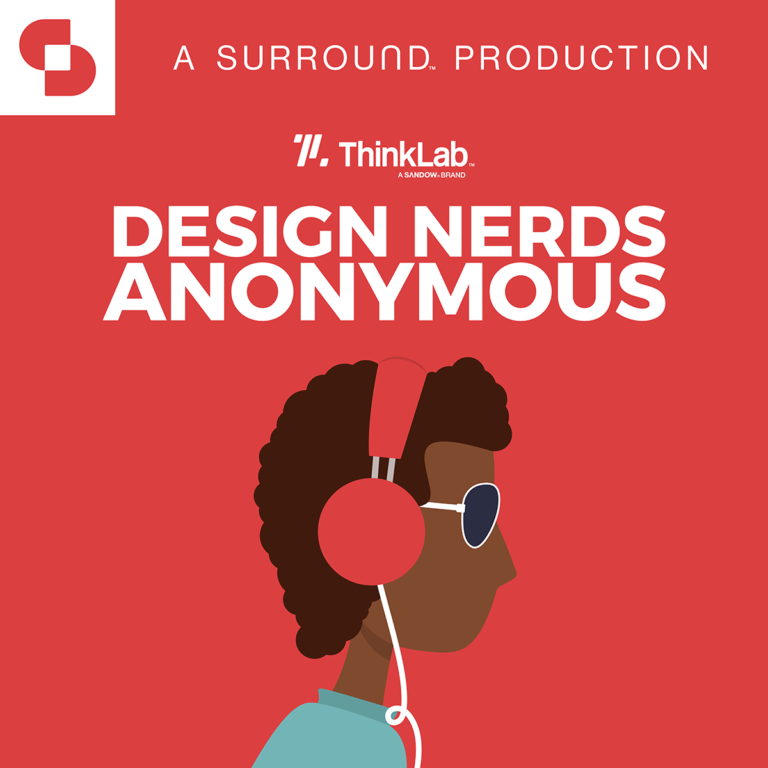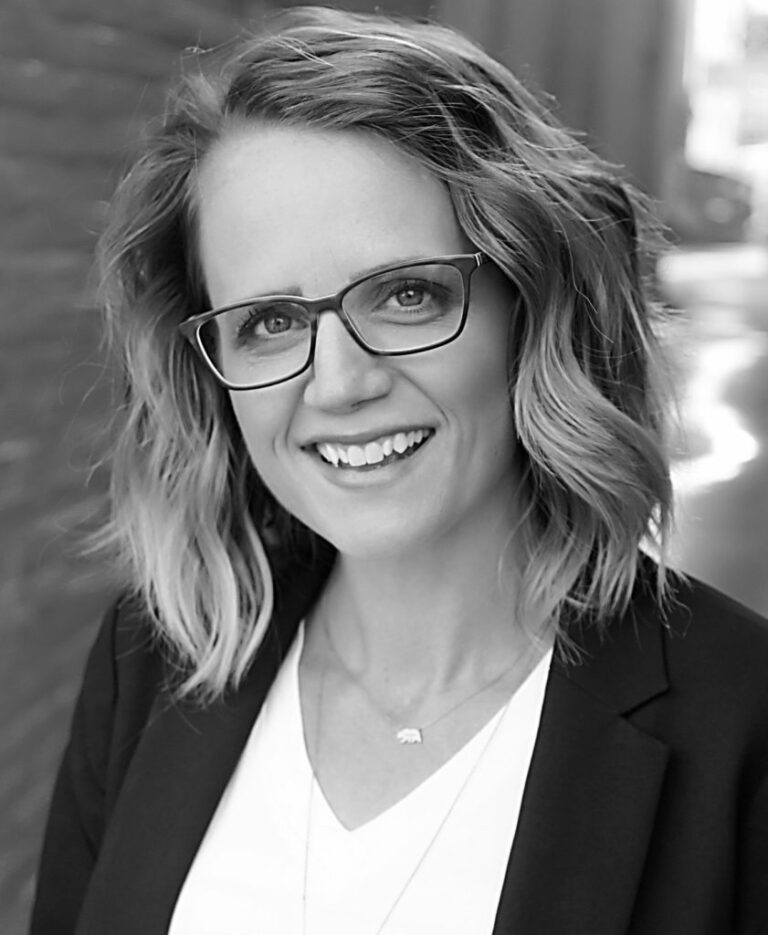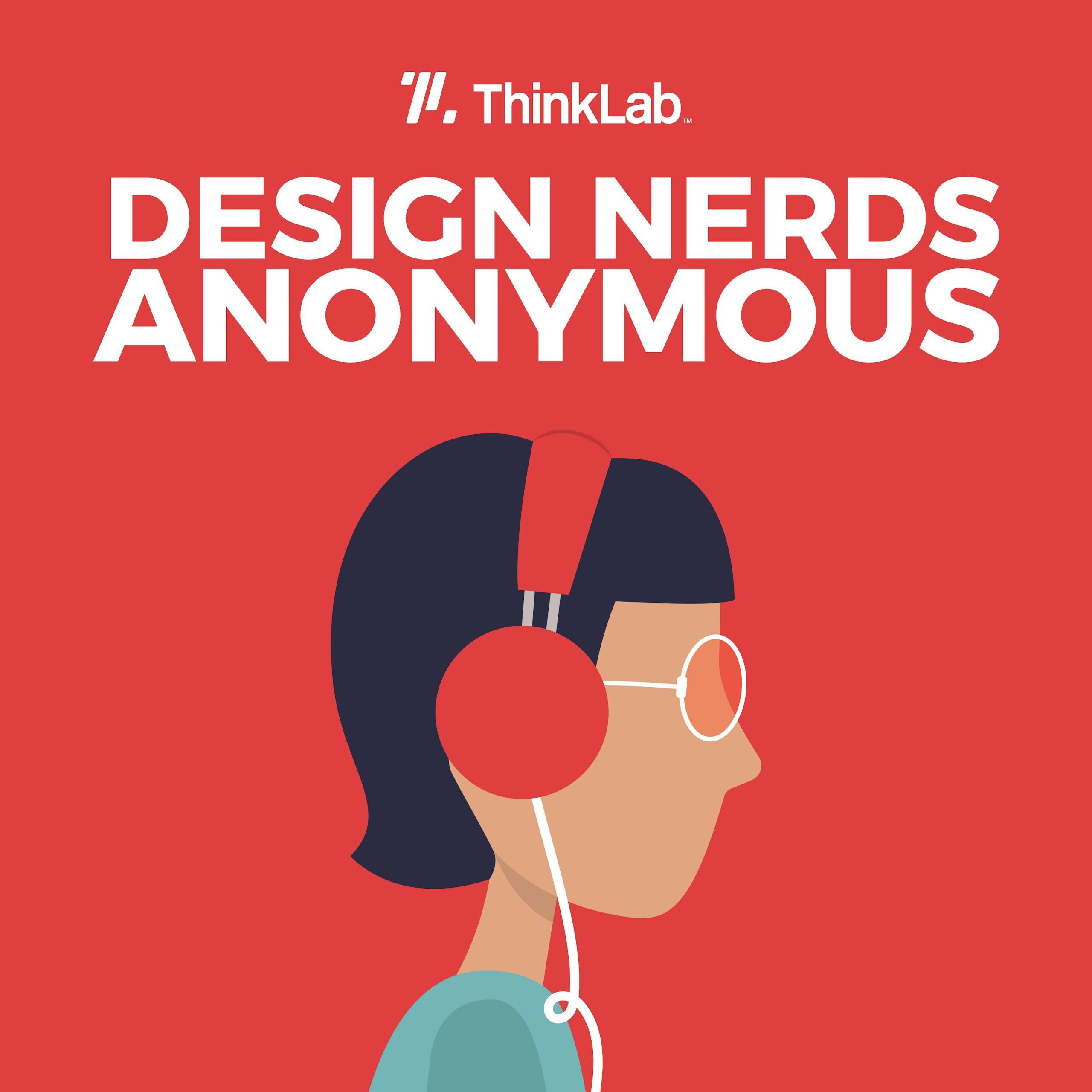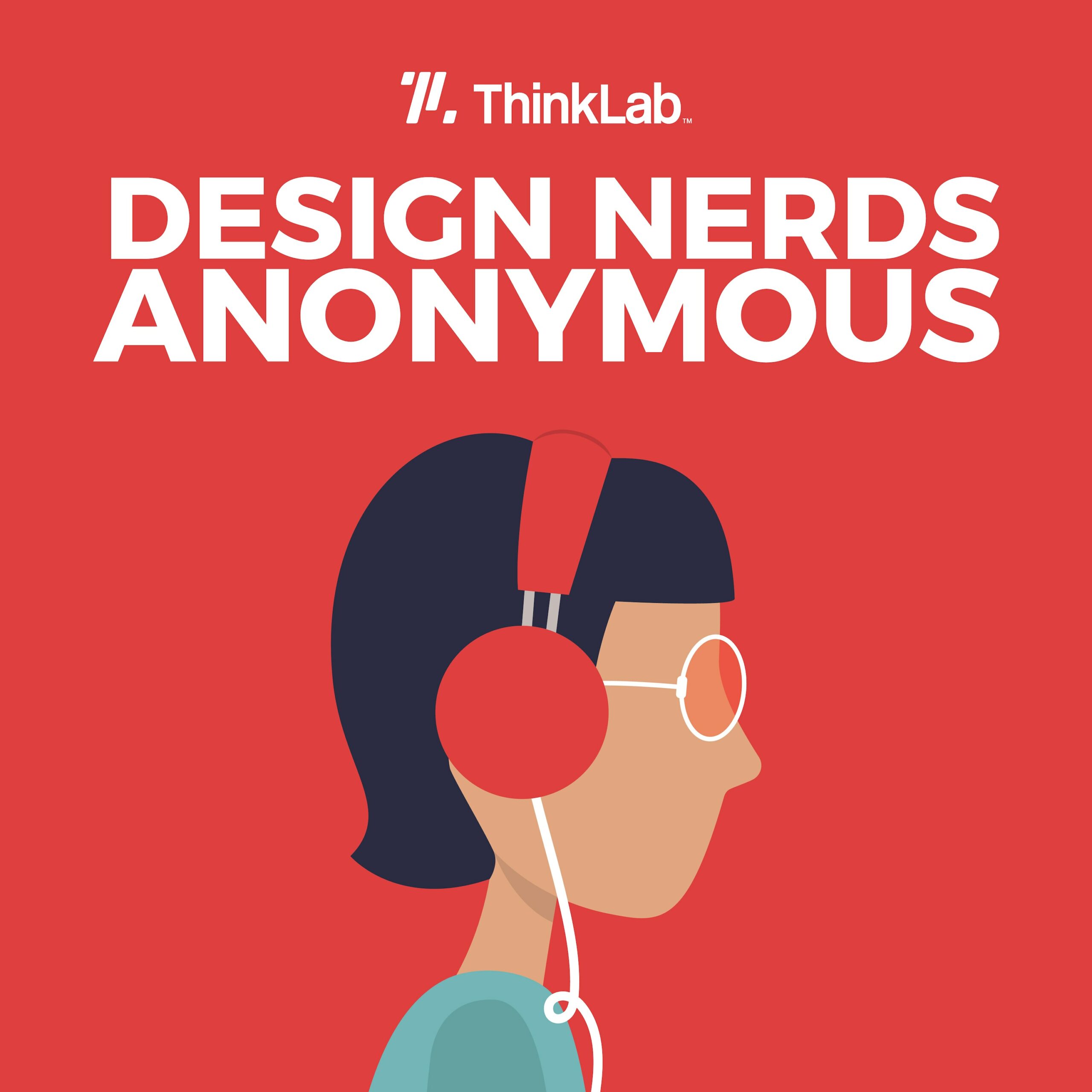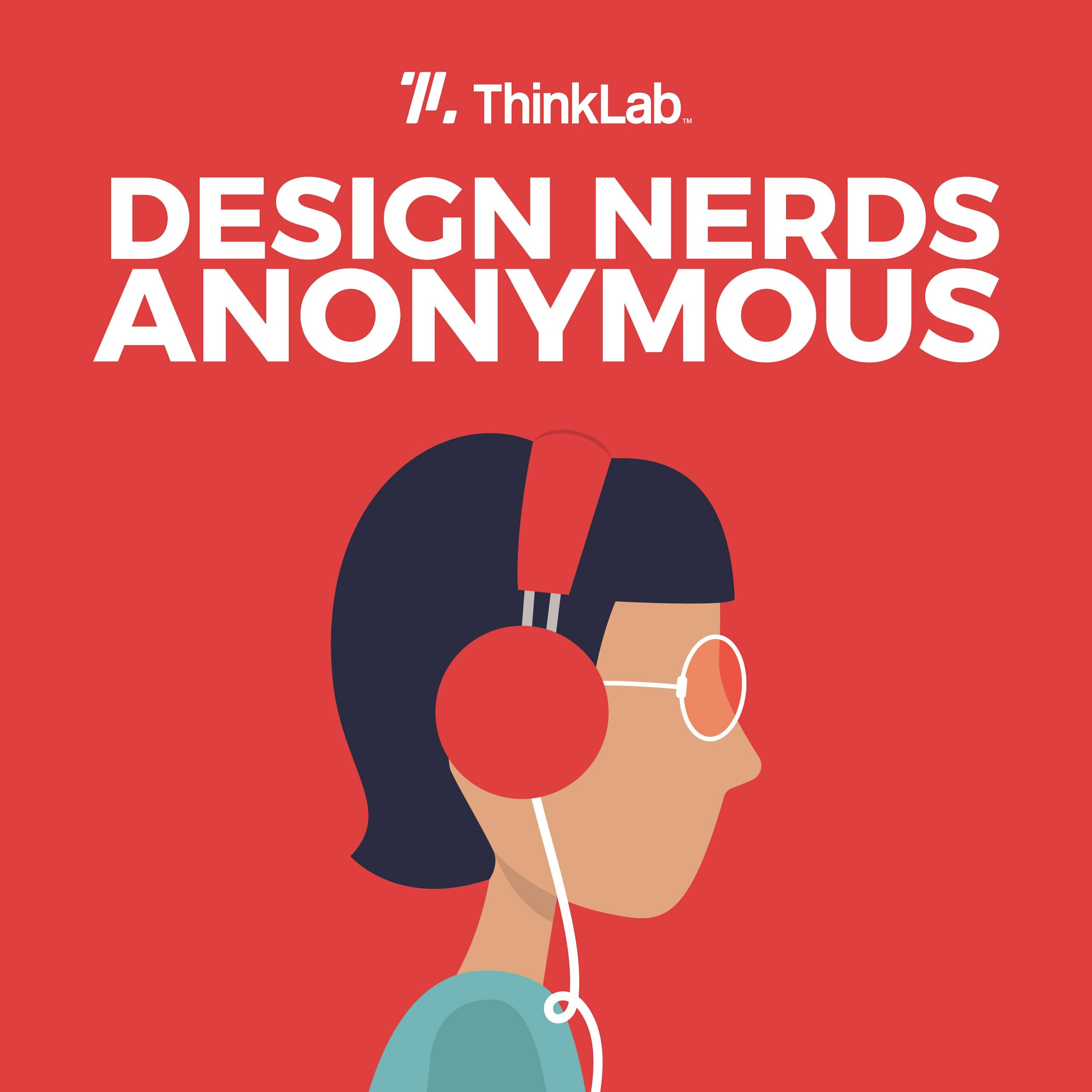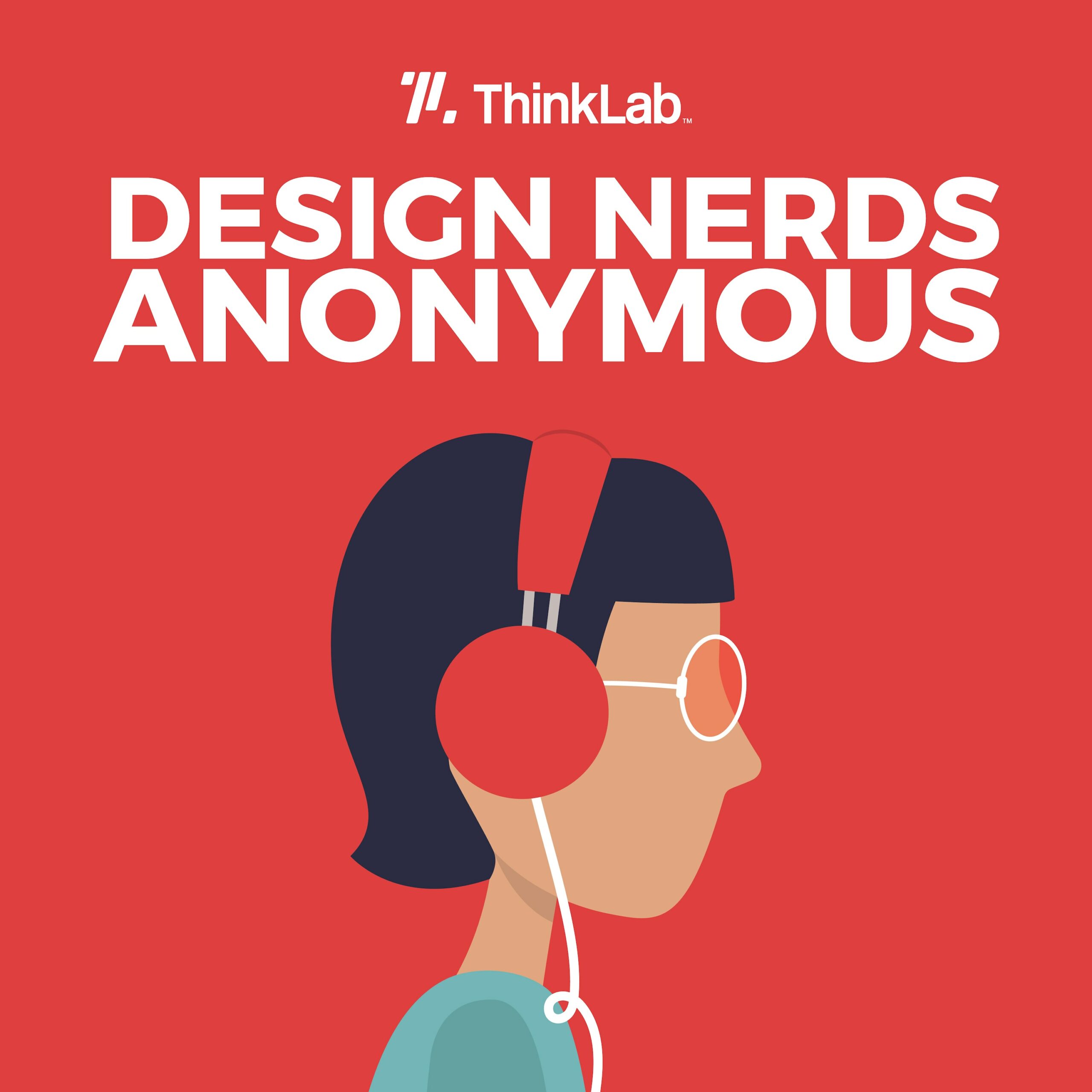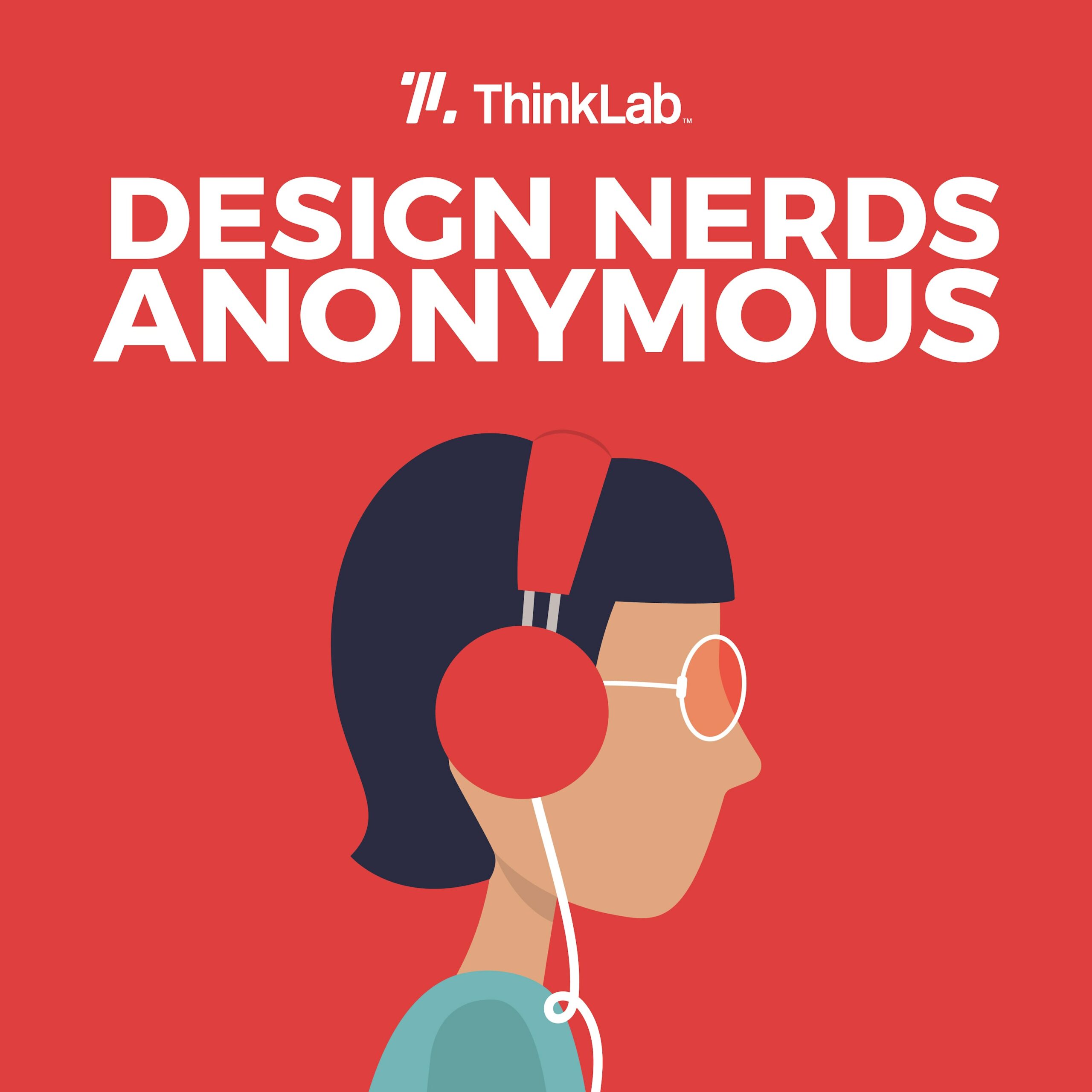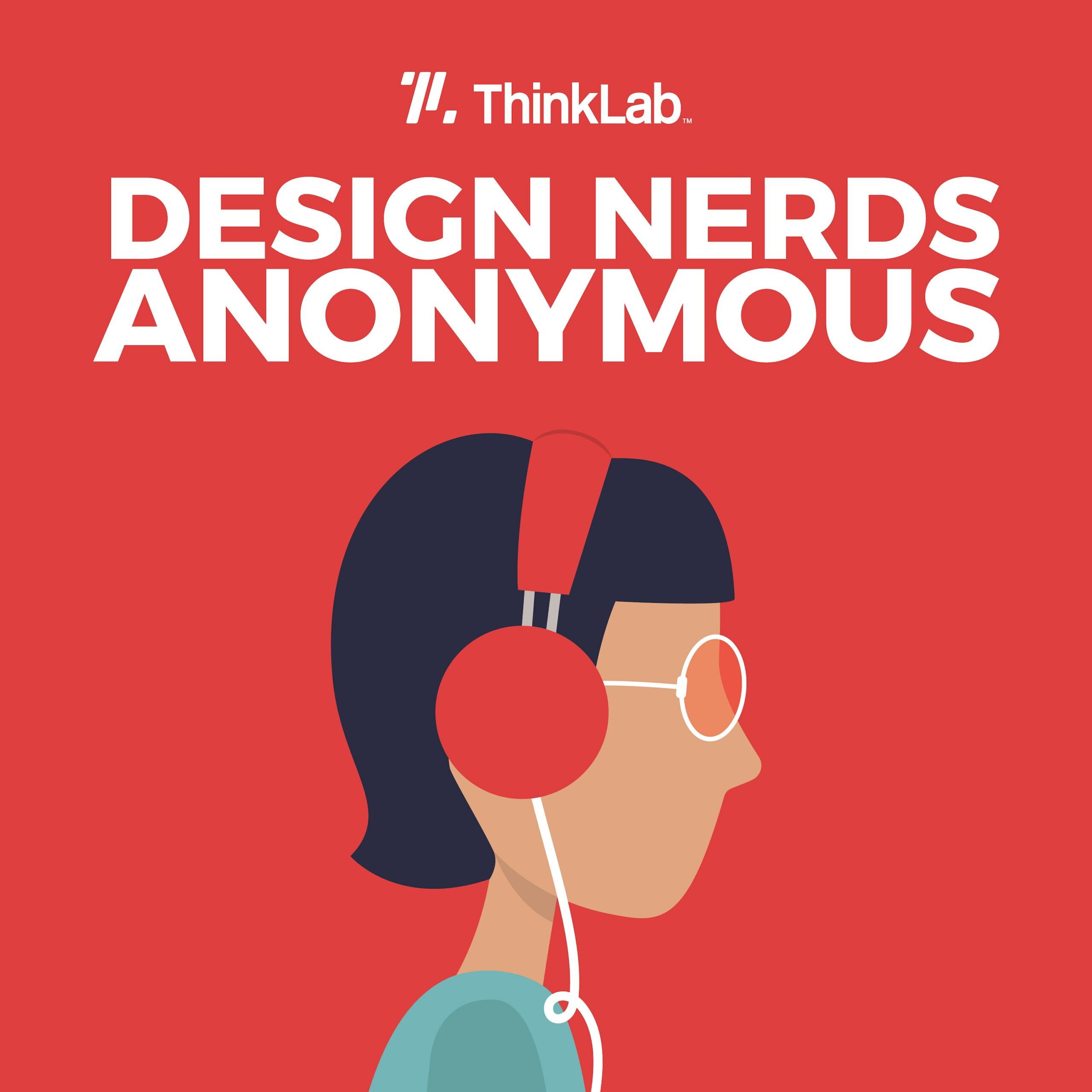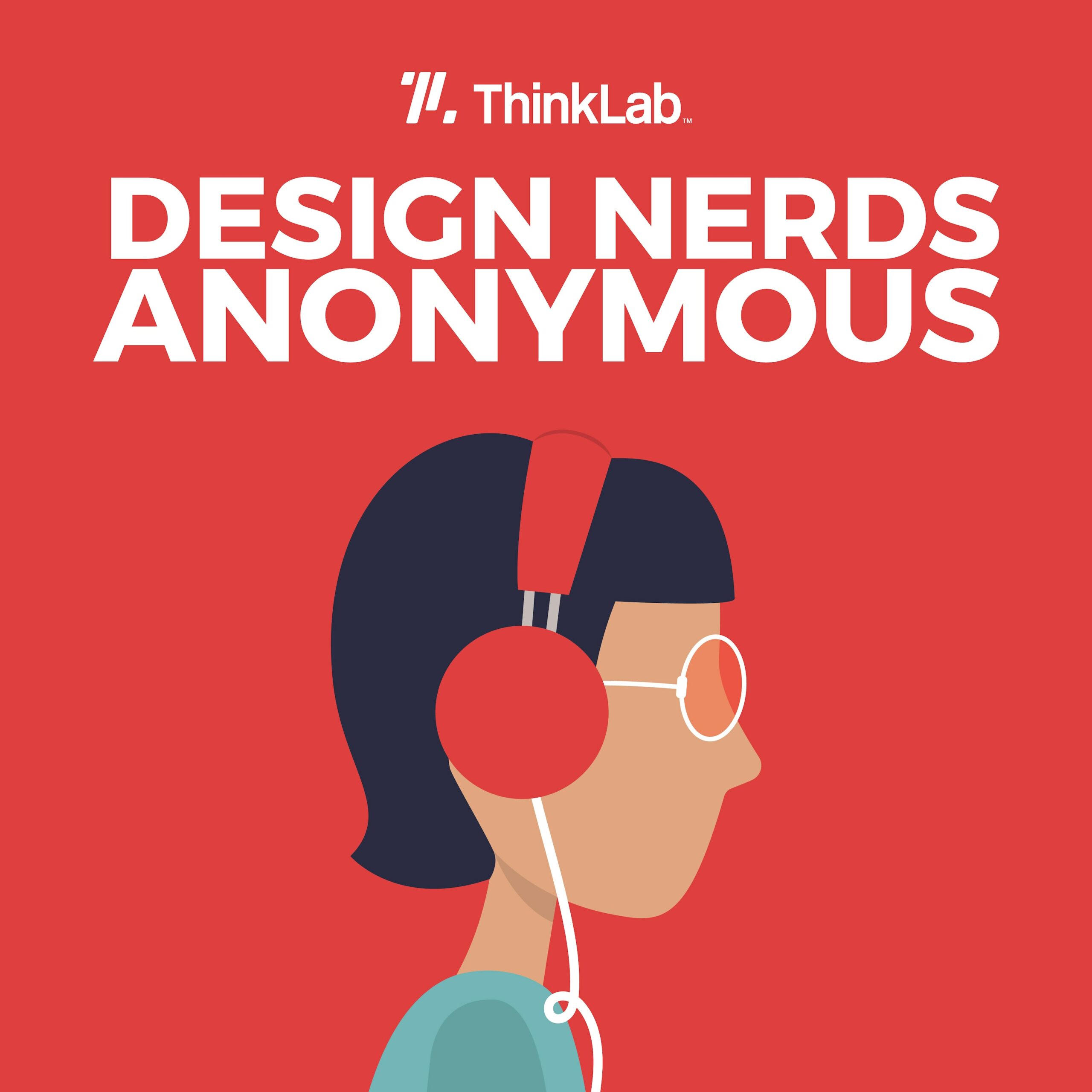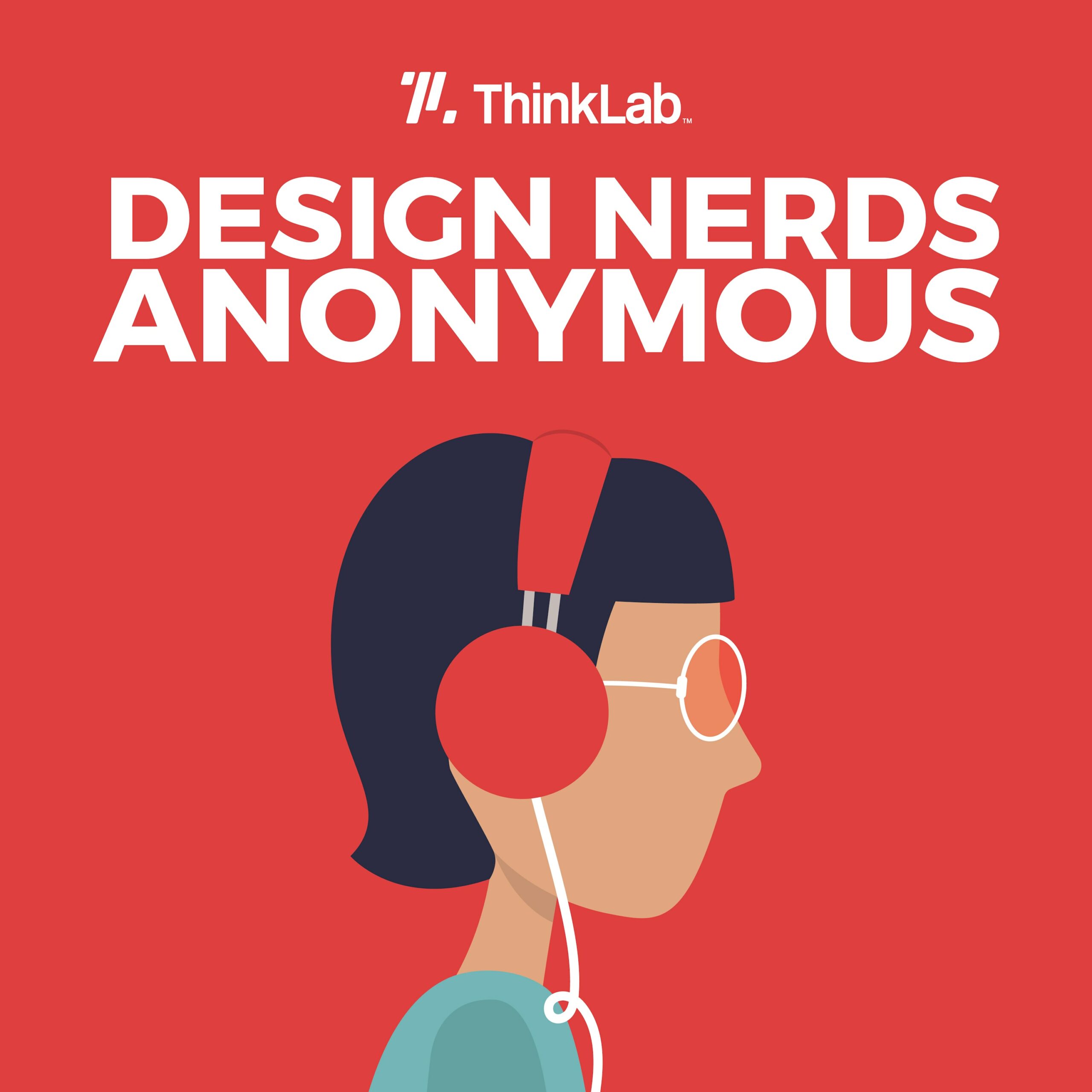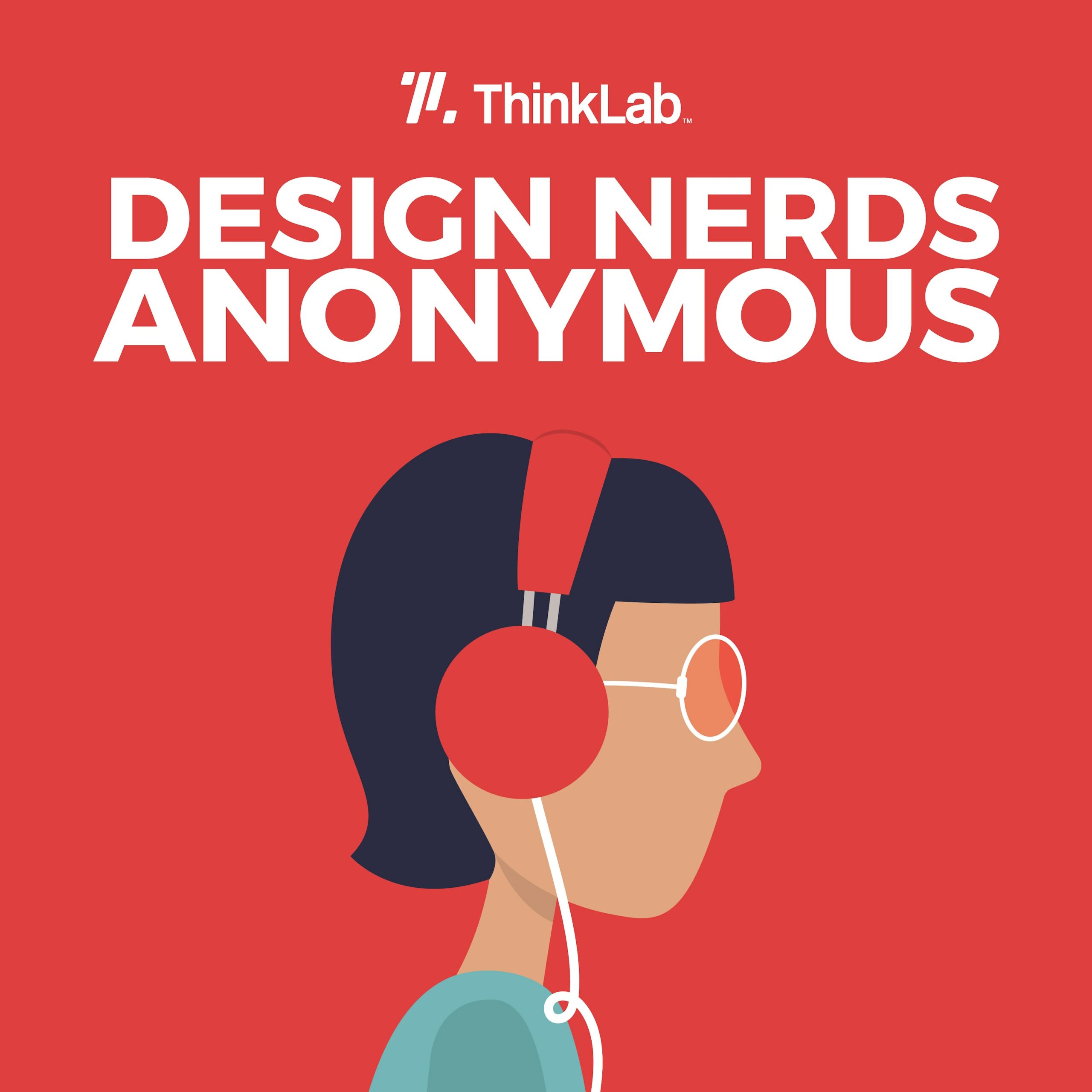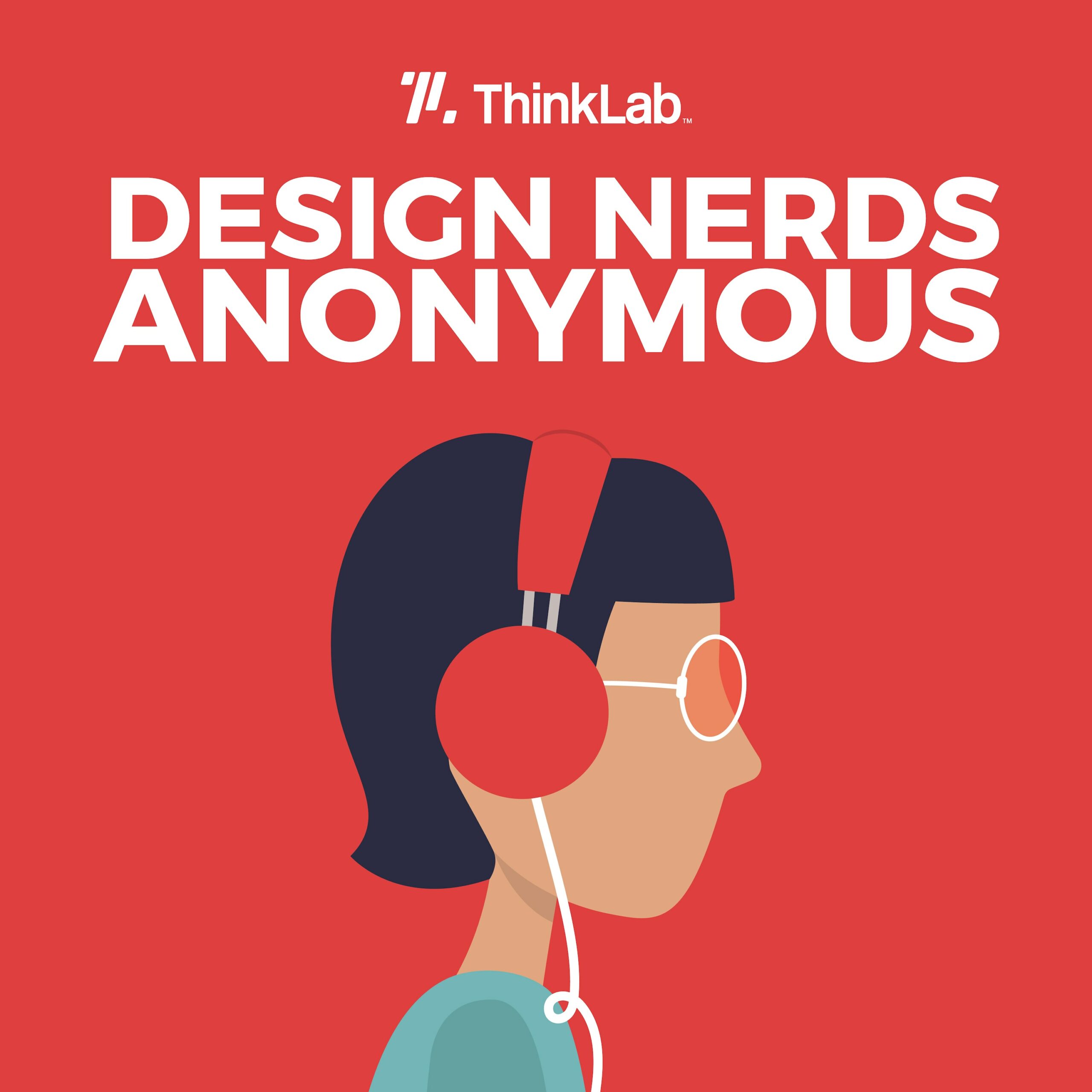Welcome to Design Nerds Anonymous: “The Gen Z Confessionals,” a miniseries dedicated to exploring the impact of Gen Z’s entrance to the workforce and the ways they are making waves in the design industry. Each episode includes unfiltered, anonymous insights from top Gen Z talent who participated in a “design confessional” hosted by ThinkLab at Interior Design’s 30 Under 30 networking events for 2022.
In this episode, we discuss how Gen Z designers are changing the way we communicate and collaborate in the workplace, the biggest shifts shaping the future of work for the good (and bad), and what post-pandemic grads are overcoming to learn the ropes in a hybrid setting.
We’ll also hear from Brett Shwery, director of interiors for AECOM, on his research about college graduates transitioning into the corporate world (see white paper here). He shares the latest findings, explains how corporations can take cues from collegiate design to ease that transition into workspace, and shares what firms like AECOM are looking for in the next generation of talent.
In this episode:
· Discover the ways Gen Z designers are using technology to collaborate with colleagues and clients.
· Hear why the physical work environment is still important — but may not be the most important factor for recent graduates entering the workforce.
· Find out how why Gen Z designers have a more inclusive and collaborative approach to work, and how this is reflected in the way they design and work with others.
· Learn what our experts think is the key to navigating career shifts in the future.
· Discover the one thing and designers should focus on when building their career paths — and why it’s NOT future-proofing their work.
Connect with our interviewee on LinkedIn:
This episode of Design Nerds Anonymous is brought to you by KI.
Design Nerds Anonymous is a proud member of the SURROUND Podcast Network. Discover more shows from SURROUND at surroundpodcasts.com. This episode of Design Nerds Anonymous was produced and edited by SANDOW Design Group, with music from Blue Dot Sessions. Special thanks to the podcast production team: Hannah Viti, Wize Grazette, and Samantha Sager.
Amanda Schneider: Welcome to the Design Nerds Anonymous miniseries, all about Gen Z. Over the next month, we’ll be sharing four episodes, exploring how the up-and-coming generation is experiencing their entrée into the working world and how we can expect them to make waves throughout the workplace.
Now, according to the World Economic Forum, by 2025 Gen Z is predicted to make up 27 percent of the total workforce. And, at best, they spent one year in what other generations might consider the normal working world before offices shut down due to the global pandemic. These experiences will forever shape how all of us work in the future.
Now, historically, skills and knowledge have been passed down from generation to generation. However, when millennials entered the workforce, they [00:01:00] had digital skills and knowledge that previous generations did not — that’s why a lot of tension began with millennials. They had what we call a “ripple-up effect” on all generations in the workforce. This means their skills change the behaviors of all generations “above” them.
Gen Z will be similar. They are now entering the workforce with skills and knowledge that even their predecessors don’t have. At ThinkLab, we believe there is a ton of opportunity, and all kinds of competitive advantages, if we can harness and lean into these differences and learn from them versus trying to dismiss them. Their experiences coupled with native relationships to digital tools will likely greatly alter not only how Gen Z designers, but how all of us communicate. [00:02:00]
ThinkLab had the privilege of hosting a “design confessional” at 2022’s Interior Design 30 Under 30 networking events, which recognize top talent under the age of 30 in select cities. Think of this as a fun spin on great reality TV, only focused on our world of design. So we’ll be putting the “anonymous” in Design Nerds Anonymous over the next few weeks by sharing the aggregated insights.
And we think the best way to do this is by passing the mic.
Anonymous Designer #1: I’m Vivien.
Anonymous #2: My name is Keaton.
Anonymous #3: I work for SOM.
Anonymous #4: I work at Lamar Johnson.
Anonymous #5: I’m with the CBRE Design Collective.
Anonymous #4: I graduated in 2017, in March.
Anonymous #1: 2014.
Anonymous #3: I graduated in 2020, right in the heart [of the pandemic].
Amanda: Whether you’re a firm trying to recruit and retain talent to this industry and to connect your teams, or a product manufacturer or distributor trying to connect with this next generation of powerful [00:03:00] product selectors, there will be something in this mini-season for you.
So, in chapter one, you’ll learn what it was like to graduate amid a global pandemic. You’ll learn the biggest shifts, for better and for worse, as seen by those with just a few working years in “the before.” Then, we’ve got a special guest coming in chapter two. From him, you’ll learn about some new research coming, exploring what we can learn from college campuses when designing workplaces to recruit the next generation of talent, and what firms are looking for differently when recruiting today.
So let’s dive in. What was it like to graduate in 2020? You’ll hear from several in our “30 under 30” confessional booth.
Anonymous #6: First of all, we were in thesis, and we hadn’t figured out the whole virtual life and how we were going to do it. It was really hard looking for a job when you knew that no one was going to respond to you. I mean, like, people weren’t even hiring [00:04:00] for a while, and then I didn’t bother for five months after graduation because I was fully in lockdown.
I started studying for the NCIDQ because there was a point where I’m like, “I don’t know what else to do.” And A.J. [Paron, EVP of SANDOW Design Group] was talking downstairs earlier about how, like, the recession in 2008, how a lot of people were great students and everything, but they couldn’t get a job. When she was saying that, I was shaking my head. People could tell me, “Oh yeah, you’re great. You’ll be fine. You’ll get a job.” But when no one’s hiring, there’s no job to get. So it was hard, but here we are.
Anonymous #7: Not a lot of job opportunities were open at that moment, and I just, I was very burned out after I graduated, so I took that time as my relaxing time, to spend time with my family, with my dogs back in California. Get away from the city a bit. I went to Pratt for school, so it was great to go back to nature.
Anonymous #8: It was very interesting. I started design school in person, which was really cool and valuable. It’s very collaborative. I went to school here in [00:05:00] New York, so it’s a very cool, like, change, especially with students and learning, and everyone’s really creative and that was really fun.
And then going virtual in the creative field is also very interesting. I felt like the collaborative sense was super different, but I think it actually made you crave that so much more.
Anonymous #3: It taught me a lot, because I had to learn how to go virtual for my classes. Honestly, I’m thankful for it because nowadays it’s all we do, really, in the industry, and in many industries. But I didn’t get the ceremonial ending. I didn’t get the college experience, the American dream, you know, that whole thing that people come here for. It was tough, but also taught me a lot. So I’m grateful for it.
Anonymous #9: I think it was pretty jarring, because I was in school and I had an assumption of what it would be like coming out of school. But a lot of my career, in the beginning of it at least, was digital, and [00:06:00] I was not able to read physical cues. I wasn’t able to enjoy a collaborative process as much as someone who had done it before COVID did. But honestly, it made me appreciate going to the office a lot more than I thought I would. And now every opportunity I get, I try to, if I’m working collaboratively with anyone, I try to do it in person.
I think, with a lot of design, especially with the way we work (behind screens, sometimes with physical samples), it’s important to be aware of when you need to be alone to be productive, to be in your thoughts versus being in a group.
Amanda: Like many designers who graduated in 2008, 2001, or any recession before that, you’ll hear that they struggled with this waiting period. But what I hope you take most from that last quote was the emphasis of choice on when, where, and with whom each of us is most productive.
Now let’s hear from some of the [00:07:00] designers that had a few years under their belt before 2020 hit, about the biggest changes — for better and for worse.
Let’s start with the positive view.
Anonymous #10: I had two years postgrad in the office, five days a week. The commute . . . I somehow managed to go to workout classes and then work and then meet friends for dinner. I don’t know how I ever did that because if I go into the office now . . . We’re hybrid, so we go in, like, two to three times a week, sometimes more if needed, sometimes less if it’s a slow week. I don’t know how I ever did five days in a row, like, my levels of exhaustion.
And I love now going in, being with team members. It’s so much more intentional when we’re in the office. And you go in to collaborate and you go in to bounce ideas off of each other, whereas it used to be your heads-down [00:08:00] work is at your workstation and you’re meeting in a conference room.
Anonymous #1: The only thing that really changed for me was the project type. So, before, I was doing a lot of high-end hospitality, but mostly in the States. But during the pandemic, I started to do a lot of projects from Saudi Arabia, and they’re even more luxurious, like, ultra luxurious design. So that was really nice, even though it might not really be built until however many years, but it was really fun.
Anonymous #10: We redesigned our office during COVID. We moved from one building to another, and we designed it totally differently. We don’t have our own workstations anymore. We have workstations that everyone can use if they need it, and you have little pods for focus space, but it’s mostly an office designed around collaboration now. Because if we’re going in, that’s what we’re using it for. So, a lot changed for us. It’s better now than it [00:09:00] was before.
Anonymous #1: We were working, like, in person, but then later on, we sort of had to figure out how to work and collaborate in virtual ways. So, we sort of had to try out all this new, different software, all this different media, to kind of see how we can do it, like a pinup board or that kind of thing.
And a lot of like, “How can we make all these meetings, these calls, and this collaborative process [happen] through video call?” And so that was a little bit different, but I think now everyone got really used to it.
Amanda: And now for the, mmm, not-so-heartwarming part. We already explored the “for better” part, so here’s the “for worse.”
Anonymous #11: It’s way more digital than tangible at this point. When I first started out — And this might be also an age thing, it might be a technology thing, but I think COVID really pushed it forward in what I see as more of a negative way: [00:10:00] Everything is digital. When you formulate an idea, you’re online looking at photos. You’re not out there, you’re not sketching, you’re not going out to museums and getting your inspiration. And I think that’s really negatively impacted our industry at the end of the day.
And it’s really limited us as designers. So, we’re seeing more of the Pinterest-worthy kind of designs versus something that’s incredibly unique and different, because we’re not pushing ourselves as designers to think outside of the box and get there. Can we make beautiful spaces? Everyone can, absolutely, but can we make this beautiful space that no one’s ever experienced before? That’s a whole other perspective, and that’s a whole other thing.
Anonymous #12: The technology — I think everyone’s talking about it, but [the drawback] is not being able to be in the same room as people, whereas before you could really show them in detail what something means. Or, if we had client meetings, we could walk around our own space and show them something. And now we’re relying on just what’s available, whether it’s on the internet or what we have [00:11:00] in our wheelhouse, our tools.
So that’s a big challenge. We try to figure out how to overcome that and figure out how to help both sides understand, but there’s still a greater barrier there. And I feel like we spend more time on trying to explain something as opposed to “This is the big picture, let’s keep rolling with it.”
Anonymous #11: I think just in general, with relationships between designers and reps, I think we just have to meet in person. Like, just generally, at this point, [things are] more digitalized. So, email based, all of that jazz.
Amanda: So let’s explore their perception of which of these changes will last.
Anonymous #12: I think we’re here forever. I think it’s going to be hybrid, always and forever.
Anonymous Designer #1: I think it will be like a 50/50. Because we know it saves a lot of time and you can call anytime anywhere, you don’t have to be in person. But we also know, for the design industry, it’s really important to see people in person, see their [00:12:00] reactions, see the materials. So I think if it’s half and half, that will be really good. Yeah, like maybe for the smaller meetings, we can do the call; for the bigger, more important meetings, those we can do in person.
Anonymous #12: I mean, there are still a lot of positives to technology and the way we’re working. Our company has so many offices nationwide that I’m able to work on a design project with someone who’s sitting in my California office, where before it may have been somewhat challenging, but I may have expertise that that team may need, and they have to call me in for something. But I think it’s here to stay, and the only way we get through it is to figure out how to make it better.
***
Amanda: So far, I’d guess, for better or for worse, we’re probably all in agreement. There are upsides and downsides, but the only way forward is to leverage the best of “the before” and today to figure out how to make it better.
Now, we hope you’ve enjoyed our passing of the mic, [00:13:00] and there will be much more of that in three more episodes to follow in this mini-season. But to introduce our interviewee in chapter two, I’m pleased to introduce you to our sponsor for this episode.
Jonathan Webb: Hi, I’m Jonathan Webb, director of workplace strategy at KI Furniture. My job is to take all the great learnings from KI’s decades of expertise in higher ed and apply that to the future of workplace. What you’ll hear in chapter two is an interview with my research partner at AECOM about some campus-to-corporate research we are currently working on to bring new insights to the industry.
If you want more information about our research, simply go to ki.com. You can download our original research white paper right there. Now, without further ado, meet Brett.
Brett Shwery: My name’s Brett Shwery, and I am the director of [00:14:00] interiors for AECOM, and I lead the interiors practice in the Americas and globally.
Amanda: As we look at this topic of transitions, knowing how things have shifted in recent years, I know one of the things that you have done with a mutual partner of ours is some research on the topic that has been leveraged for a while and I think you’re in the process of updating. So, will you tell us a little bit about that research, your role in the research, and where you are in that process?
Brett: This research started about 10 years ago, and what my partner in crime, Jonathan Webb, and I were doing was understanding how the transition between a college environment to a corporate environment would affect the person going between the two.
What we really wanted to understand was could corporations take planning cues and design cues from how collegiate aspects of learning work into the corporate environment.
From that research, what we really learned, there were a few key things. And one of them [00:15:00] has to do with transition. So, what was the transition? We asked a question of our corporations. We asked them, “Do you think that those college students were lost when they came out of college and came into the work environment?” And at that time, 82 percent said, “Yes, they’re lost. They come in, they’re walking around.” You could think about it as some visual where they were in a daze walking around a sea of cubes and they didn’t know what was going on. It had more to do with just [being lost] in the physical space and what they were thinking of doing, how to approach their work [in that space].
So, companies really felt that this is the way that the transition happened. I think as we jump forward into thinking about 10 years from then to now, and looking at asking that same question, we’ve lived through so much in 10 years, including this big event called The Pandemic. And so, what would that number look like now in asking those companies too about that transition? I think it’s going to be a different answer.
And I think actually the [00:16:00] answer will be much lower in the percentage. My guess, and we’re in the midst of unpacking this now in some newer research, but my guess is that number’s going to go down a bit, because a lot of that transition [previously] had to do with physical space, so designing for physical space. And as we are in an environment now — you can call it hybrid, remote, mixed, whatever terminology you want to give to today’s work environment — there’s a lot of flexibility put in there.
So the transition into a physical work environment is probably not as important to a recent graduate because a lot of them might have been hired during the pandemic. And they don’t know what to expect other than to expect that they’re working, so there’s other things that are more important to them in their work career than just making it work on “How am I going to come into a physical office, and what’s that going to look like?” There might be anxiety, but I don’t think [00:17:00] there’s as much lost in transitioning between [college and the workplace].
Amanda: So that’s super interesting because onboarding has been an issue at all generations, all ages, as we shift to this more hybrid work. And our current hackathon is really diving into generational shifts and perceptions, and we often hear conflict, like, “Should we be changing for the next generation, or should the next generation be learning the way things are done?” And that’s the beauty of the moment that we’re in right now, right, is that everyone has been part of this collective upheaval to figure out what we want to be that next normal.
Brett: I think it’s really important, and now here’s where we’re coming into sort of the generational aspect, especially in Gen Z, with that group being much more highly collaborative than probably if I looked at the generation that we were interviewing 10 years ago [who] would be a little bit different, a little bit more about “me and my nervousness,” versus moving forward with a different generation that has more realism about them, more inclusivity, more collaboration, just some of the characteristics that come out in a Gen Z [00:18:00] environment.
And I think that’s going to be important in trying to figure out how you transition from one spot to the next. I think that being realistic is a big word, I think, in today’s work environment.
Amanda: I’m also curious with that research, as you look to redo something that was done 10 years ago, now with a fresh perspective, are there any other hypotheses that you have, any other specifics you’re really digging into that you hope helps clue in other people who design spaces about how they can take these cues to make that transition easier?
Brett: I think a couple of things. We want to redefine “remote.” That’s one piece that I think will help us transition. And then, what’s the new face of office hours? And I think that’s where, even within my own company, we’ve started to approach those pieces so that it helps to redefine what is the working environment of today? What is it to work, and what does that mean when you’re “coming to work,” if you will?
We’re picking up on [00:19:00] that a bit with our program that we have here at AECOM that we call “Freedom to Grow.” And that particular program was really built around on how could you make an employee, somebody who’s working really at their best — When they’re at their best for themselves, they’re also at the best for the company. So it works two ways.
So, there’s a lot that had to really be looked at, and then how those components then might translate to physical space that we actually design. So, things like I just mentioned, thinking about remote or time or expectation or metrics that you have to build around — those are things that maybe don’t have to do with physical space. So, once you understand what you want an employee to think about in those areas that are more what I call HR-oriented, then how do you take that information and translate and design for it in a physical environment when they do come together?
There is a need for that physical environment, to be together. We all know these things, social aspects, collaboration. People just even like to have [00:20:00] another warm body next to them. Or they need to have escapism from the remote location that they’re at, and they need to come somewhere. So, there will always be that environment, but what does that environment look like as a result of these other pieces that make up what would be called a workday?
For us, as we look at this newer aspect of research on transitioning somebody out of college and into the work environment, we really have to understand that. I think we even have to take a step back and look at what has happened in the day-to-day for a college student, just like for a worker. So, a college student 10 years ago was learning differently than they are today, and I know this for a fact, since I had a college graduate in my house during the pandemic. It’s very different. And then trying to find work when nobody was opening the physical door, but there were only virtual doors to be opened.
It’s an interesting combination. But understanding, I think, is where — that’s the baseline for both the designer [00:21:00] and the potential employee: really understanding and going a little bit further than wants, but actually to understanding.
Amanda: I think that’s so interesting, because in this industry we naturally start with physical space and then try to fit policy in around that. It sounds like, at your firm, you’ve actually flipped that discussion.
Brett: We love ourselves a good program. So, I think that it was a way to bundle [policies] together, but also to put them more visible to the employees. If there were things about flexible work hours or the specific needs of an employee, those were all in existence prior to a program being born. And when Freedom to Grow came, it was a way to actually promote [policies] and make people feel comfortable that this is something that the company could get behind, so actually packaging it up in a way that made people feel comfortable, that they could look at very succinctly.
Amanda: I feel like that’s a great thing, especially as we look at younger generations. One of our stats says the average Gen Zer has a seven-second [00:22:00] attention span. And I think, you know, a lot of companies have written manuals about their new policies and what you have to do and what the requirements are. So I think even just the simple fact that you branded this as a program and launched that to the industry is really great as a recruiting tool.
What do you want students to know, or potential recruits to know, about that program and what makes it so great to work at AECOM?
Brett: It’s so good, the seven-second thing, because in a world of TikTok and fast-moving media videos, we want to see something, we want quick gratification and understanding in a very short mode. And if I was a young person, I’d want to see and understand that the company’s looking at time, place, task, work style, communicating, thinking, being.
If I looked at those and put those together and said: Here’s what we are looking at. Somebody can look at that really quickly in that seven-to-ten-second time frame. How do you make it really realistic and relevant quickly?
And that’s why I think with the Freedom to Grow program, [00:23:00] it actually became very important to make it very succinct for our employees, and our potential employees — our current ones and the talent that we are looking to acquire.
Amanda: And I’m curious, as you look at implementing this in your own firm, with your own physical space as a recruitment and retention tool, how has your physical space changed?
Brett: We have had a reduction in space, but we’re also rethinking it: When we’re saying “a reduction in space,” maybe there’s another space that needs to then be born somewhere else. And what does that look like?
And most of it is really thinking around collaborative spaces. So, we’re thinking about reconfiguring workstations, providing more open, collaborative, social areas; that is happening. But what’s more interesting is how employees are coming back to what would’ve been a frozen space from before and how people just find a way to start to manipulate something in the space and make it work for themselves.
I have to say that we’re not completely, fully there yet. I think it will take some time. I’m saying it for our own company, and I know it for [00:24:00] other companies, too. It’s not like an overnight switch that can be turned on and all of our spaces are now going to be these super uber social, collaborative hubs that you come into. It’s just over time, it will take some time to actually change that physical environment.
Amanda: So, in our last few minutes together, I want to talk to some of these student groups. A lot of them would love to work for a firm like AECOM. If you had to speak to those student groups about some of the things that you are looking for in the next generation — I’m going to prompt you with a few cues. One example is trying to have our younger generations pick up some business development skills. We’ve also heard things about “I would rather hire for efficiency, because we can teach the software skills” or “It’s about that team fit, especially in this hybrid era.”
If you had to talk to some of these younger generations about what firms like AECOM are really looking for today, what would you say?
Brett: I’d say the thing that comes to my mind completely when you’re saying that is “self-reliance,” “self-starter.” Those [00:25:00] particular aspects are really important because you are working in an environment, not just AECOM but the business world, that is constantly in flux and changing. There’s no structure perhaps as it was several years ago where you could kind of see and put yourself in there and comfortably work your way through that. And now it’s more like, “If I see something I don’t understand or don’t want, or I need to do something about it, will I take that upon myself to do it?”
I’m going to go back to your comment about business development. Because that one is really actually near and dear to my heart, because I’ve had some heart-to-heart conversations with a lot of folks around what that means. I was not hired to be a business developer. I’m a designer, and this is what I do. But business development is a way of saying you’re selling; you sell a design every day. When you’re trying to put something together, you’re trying to sell the potential of a service. The issue is [00:26:00] really around [younger generations] understanding what that means when you say “business development” and what they have to actually talk about with somebody else as it relates to business development.
They can talk about themselves, and maybe somebody will just absolutely love them and then want to hire them because they are at a particular company. But also they need to know: What does the company do? What’s the company culture? What are the company’s goals, vision? Many times you can ask a young employee, “What’s the goal of our company?” and they’re like, “I don’t know.” And oftentimes, getting their arms around that to go out there and talk to somebody else and be excited about that and what the company does, that helps in business development beyond just themselves.
So, there’s some training that needs to be done there, but I think there’s so many great people and those who are really making their way and their career, who just need a little bit more mentoring and what that means in business development, so that it doesn’t come off to be so scary. “If I don’t [00:27:00] bring in $1 million worth of business, I’m going to be let go” — that’s not the case. It’s about what is your ability to understand that so you can be effective, and I think maybe that’s why I go back to the self-reliance, self-starter comment. Those are the things that I quickly look for when I’m interviewing a candidate.
Amanda: So, this gets interesting, too, because I think if I’m that young listener hearing this for the first time, I think, “How are you measuring those skills?” To me, this almost gets into nature versus nurture. Are these just skills that I innately have or don’t have? Is there a YouTube video I can watch, or is there a course I can take? Just looking at what self-starters some of these folks are, and how my kids are going to watch YouTube to learn to tie their shoes over asking their dad.
As you look at what advice you might give them to get ready for this professional world, what would you say?
Brett: I’d say that they need to start to look at taking some nontraditional courses outside of their own regular world — especially for the designer side, I think — [00:28:00] taking classes that expand their knowledge in other areas of society, social aspects of how you can be more inclusive.
Think about all of the wonderful seminars that are put on by many different organizations and how designers oftentimes maybe don’t tap into them because they’re not officially in the design world. But this would benefit them more to expand their knowledge base, to be a little bit more comfortable to have conversations.
And I look at what we do, and we’re a very large infrastructure company, so there’s a component of what we do that is in the day-to-day life of the traditional architecture and interior design world: what’s happening with the world of how we’re taking care of our water infrastructure for the world, our roads, our transportation, everything that has to do with the living environment.
And oftentimes those things may not relate typically to me designing an office space, or even a hospital or something else. But if I look at [00:29:00] the influences that those other components have into what we do, it makes it very powerful for me to think more broadly, so that when I’m thinking about somebody coming into work for the day that I’m actually over with our transportation people talking about how the city is dealing with transportation aspects to get around to different parts of a geography or a county. And that affects how I might design for a client or make a recommendation.
So, there’s a broader sense than just looking at the bubble of the project that’s sitting in front of you, and [instead] thinking about what are the other things that influence it.
Amanda: I want you to zoom out. We’ve been talking about our advice for this next generation, but as we look at challenges that this industry has in recruiting and retaining talent, how would you challenge our industry to think bigger, think differently?
Brett: I’d challenge us to think more about resilience. For the longest time when I was thinking of that word, it just [00:30:00] sounded very ominous to me. But resilience means that when something comes and is brought to us, we know how to approach it. We’re not afraid of it. We go into it with a way of thinking about “How do I solve for it?” I think that’s really important for us to think about as designers: What is that resilient way for my own career, for the clients I’m serving?
I do not like future-proofing. Future-proofing is something that you can’t prove, so those are two words that actually contradict in my mind. But you can build around resilience and find ways and different methodologies of approaching and being ready for whatever life throws at you, or whatever your client throws at you, or whatever career shift that you want to make. How are you resilient?
So, I’d say that’s probably my word for the day and my answer to you.
Amanda: I think it’s a perfect ending, and I’ve never thought about the word “future-proofing” that way because in my circles, a lot of people try to throw that one around. So now I’m never going to look at that the [00:31:00] same way after this interview.
***
Amanda: I want to take a moment to thank you for joining us. Tune in next week as we once again pass the mic to explore what the newest generation loves about the industry and — get ready — the biggest opportunity for improvement.
Design Nerds Anonymous is a proud member of the SURROUND Podcast Network. Discover more shows from SURROUND at surroundpodcasts.com.
Before you leave me for the day, I want to be sure that I personally invite you to subscribe to this channel if you’re not already a subscriber, because we don’t want you to miss a thing. Or if you’re already subscribed, please show us your support by sharing this podcast with a colleague or leaving us a rating or review. Talk to you next week.
This episode of Design Nerds Anonymous was produced and edited by SANDOW Design Group. Special thanks to the podcast production team: Hannah [00:32:00] Viti, Wize Grazette, and Samantha Sager.

